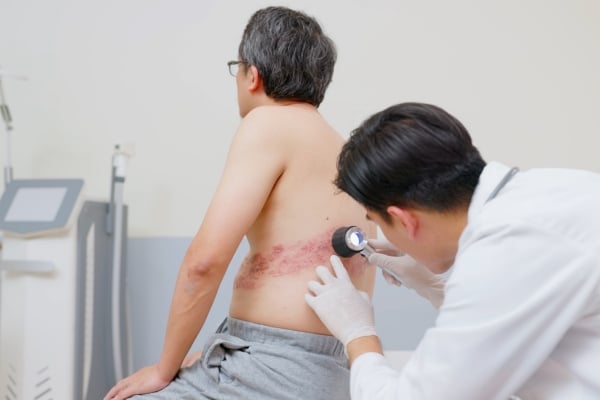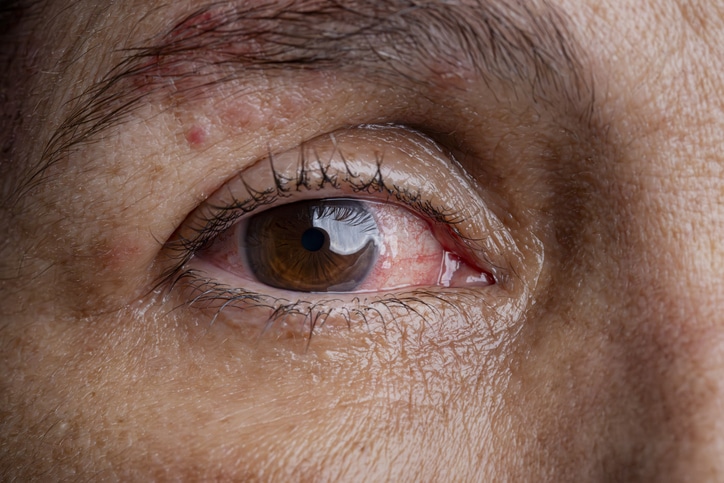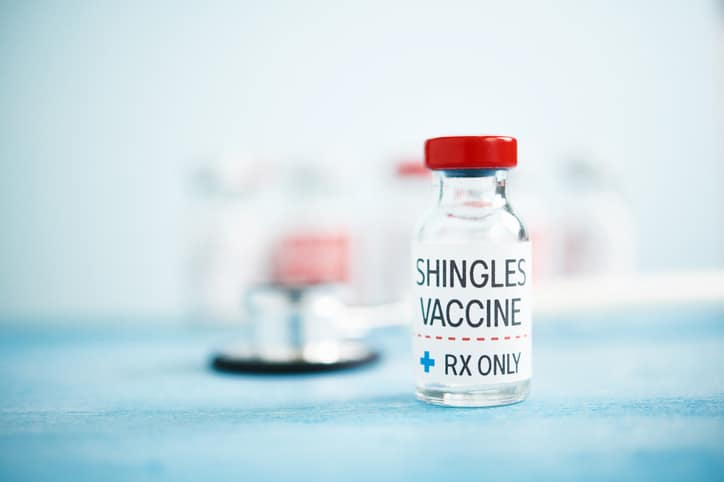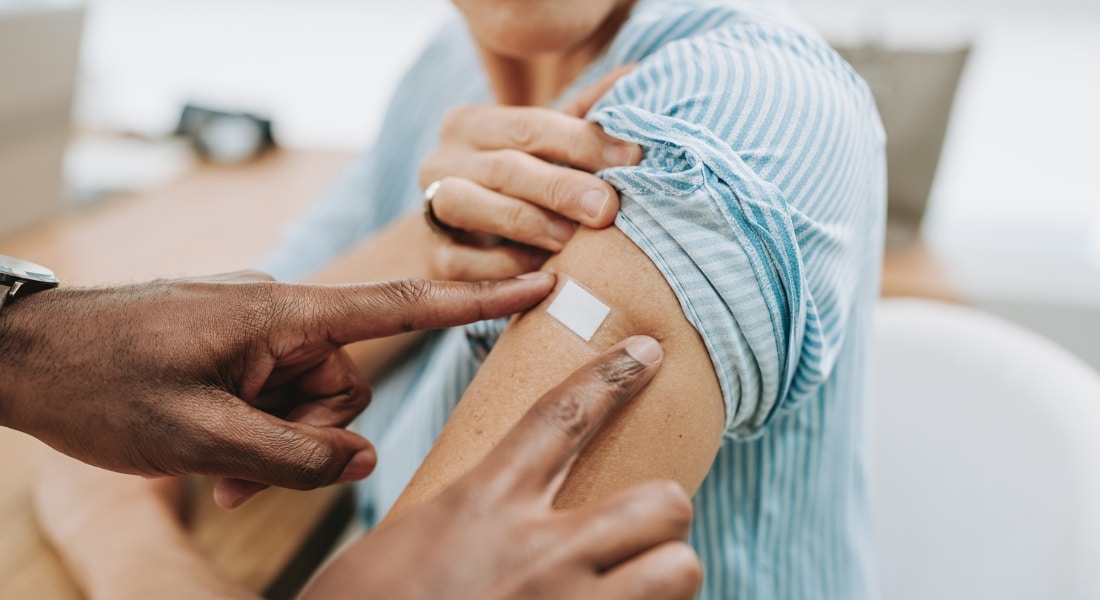About 1 in 3 Americans will develop shingles in their lifetimes, an estimated 1 million cases per year, but nearly everyone 50 and older carries the virus that causes the infection.
That’s because the same virus that triggers chickenpox also activates shingles in some people, so if you have ever had that common childhood virus, you could also get shingles, which can cause debilitating nerve pain and even blindness.
What too many people don’t know is that there’s a vaccine to protect against the disease, and it’s more than 90% effective at stopping shingles.
“It’s extremely effective in preventing shingles and postherpetic neuralgia,” says Edward A. Dominguez, MD, medical director of organ transplant infectious disease at Methodist Dallas Medical Center.

Shingles often appears as a burning or itchy rash that extends as a band on one side of the chest or abdomen.
WHAT TRIGGERS SHINGLES?
The two main triggers for shingles are the varicella-zoster virus and stress, which weakens the immune system and can cause the dormant virus to reactivate.
Shingles is not contagious in the traditional sense. However, it’s possible for anyone who hasn’t had chickenpox or been vaccinated against the virus to catch chickenpox if they are exposed to shingles blisters.
Those who might be susceptible include infants, pregnant women, and those with weakened immune systems.
The blisters that shingles causes should also be kept clean and never scratched or bandaged.
“Be careful about sun exposure and minimizing contact with others who might be susceptible,” Dr. Domiguez says.

A facial breakout can infect the cornea, causing vision problems and even blindness if left untreated.
WHAT ARE THE SYMPTOMS?
Shingles is not life-threatening but can cause mild-to-moderate symptoms that should be handled with caution to avoid further complications.
Among those possible complications is an eye infection known as keratitis, an inflammation of the cornea that can lead to scarring and ultimately blindness if left untreated.
Other symptoms include:
- Pain, burning, or tingling
- Sensitivity to touch
- A red rash that begins a few days after the pain
- Fluid-filled blisters that break open and scab over
- Itching
The most common complication, postherpetic neuralgia, causes a burning pain in nerves and the skin.
“The pain tends to be along one side of your body, and it can be quite debilitating,” Dr. Dominguez says.
The best way to reduce the risk of developing shingles and postherpetic neuralgia is to get the Shingrix vaccine, which was approved by the FDA in October 2017.

Older adults and anyone with a weakened immune system should consider getting the shingles vaccine.
WHO NEEDS THE VACCINE?
Shingrix replaced another shingles vaccine (Zostavax), which was only 51% effective in prevention. So anyone who got the old shot would be wise to seek out the new vaccine, which is far more effective and comes in a two-dose regimen administered over two to six months.
Eligible patients are between the ages of 50 and 69 and those 19 to 49 years old with a weakened immune system, including patients with HIV or leukemia or who have undergone chemotherapy.
Dr. Domiguez advises patients to get the vaccine even if they have had shingles in the past or have received the old vaccine, Zostavax, or the chickenpox vaccine.
He cautioned against it for anyone with an active shingles infection or pregnant patients, as well as patients who have had an allergic reaction to the vaccine in the past.

Side effects from the shingles shot include soreness around the injection site that typically only lasts a couple of days.
ARE THEY ANY SIDE EFFECTS?
Dr. Dominguez assures that any side effects from the vaccine — which can include mild to moderate soreness and redness at the injection site — are generally temporary and only last two to three days.
“Sometimes you can have arm swelling, which may require some pain medication,” he says.
Other side effects include:
- Headaches
- Tiredness
- Shivering
- Upset stomach
- Fever
There’s also a slight risk of Guillain-Barré Syndrome (GBS), a rare disorder in which the body’s immune system damages nerve cells, causing muscle weakness and sometimes paralysis.






